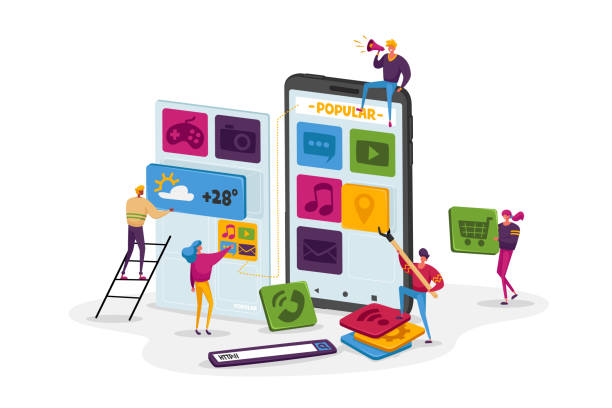Presentation:
In the quickly advancing scene of innovation, mobile applications have turned into an essential piece of our regular routines. From person to person communication to efficiency instruments, amusement, and then some, mobile apps have changed the manner in which we associate with the computerized world. This article investigates the perplexing system of mobile app development, revealing insight into the key stages, challenges, and arising patterns in this unique field.
I. Figuring out the Nuts and bolts:
Mobile app development includes the formation of programming applications explicitly intended to run on mobile gadgets, for example, cell phones and tablets. The interaction includes a blend of configuration, coding, testing, and sending to guarantee a consistent client experience. The two significant stages ruling the mobile app market are iOS (Apple) and Android (Google), each requiring an unmistakable arrangement of development instruments and rules.
II. Key Phases of Mobile App Development:
Ideation and Arranging:
Prior to plunging into the development interaction, an unmistakable comprehension of the app’s motivation, interest group, and usefulness is pivotal. This stage includes conceptualizing thoughts, directing statistical surveying, and framing the app’s highlights and objectives.
Plan:
Client experience (UX) and UI (UI) plan assume a critical part in the outcome of a mobile app. Planners center around making a natural and outwardly appealing connection point, guaranteeing that clients can explore the app flawlessly. Prototyping instruments are frequently used to imagine the app’s design and stream.
Development:
This stage includes the real coding and programming of the app. Designers use programming dialects like Quick for iOS and Java/Kotlin for Android. Cross-stage development systems like Respond Local and Shudder have acquired ubiquity, permitting engineers to compose code that deals with the two iOS and Android stages.
Testing:
Exhaustive testing is basic to distinguish and correct any bugs or issues. Testing incorporates usefulness testing, convenience testing, execution testing, and security testing. Emulators and genuine gadgets are utilized to reenact different situations and guarantee the app performs ideally.
Organization:
Once the app has gone through thorough testing and is considered prepared for public utilization, it is submitted to the individual app stores (Apple App Store for iOS and Google Play Store for Android). App store rules should be kept to guarantee approval and perceivability.
III. Challenges in Mobile App Development:
Gadget Discontinuity:
The large number of gadgets with shifting screen sizes, goals, and equipment details represents a test for engineers. Adjusting the app to various gadgets requires cautious thought to keep a predictable client experience.
Security Concerns:
Mobile apps frequently handle touchy client information, focusing on security. Engineers should carry out powerful encryption, confirmation, and approval components to safeguard client data and guarantee information security.
Quick Mechanical Progressions:
The quick moving advancement of mobile innovation implies designers should remain refreshed with the most recent instruments, structures, and best practices. This steady expectation to learn and adapt guarantees that apps stay viable with new gadgets and working framework refreshes.
IV. Arising Patterns in Mobile App Development:
Man-made consciousness (computer based intelligence) and AI (ML):
Incorporating man-made intelligence and ML into mobile apps upgrades client encounters by giving customized proposals, prescient investigation, and shrewd computerization.
Increased Reality (AR) and Computer generated Reality (VR):
AR and VR advancements are progressively finding their direction into mobile apps, making vivid and drawing in encounters. From gaming to instruction and retail, these advances open up additional opportunities for collaboration.
5G Innovation:
The rollout of 5G organizations guarantees quicker web velocities and lower inertness, preparing for superior execution, information escalated mobile applications, for example, increased reality and continuous correspondence apps.
End:
Mobile app development is a multi-layered process that requires a mix of inventiveness, specialized mastery, and versatility. As innovation keeps on propelling, the scene of mobile apps will without a doubt develop, introducing the two difficulties and open doors for engineers. Staying up to date with arising patterns and sticking to best practices guarantees the production of powerful, easy to use applications that have an enduring effect in the computerized domain.


